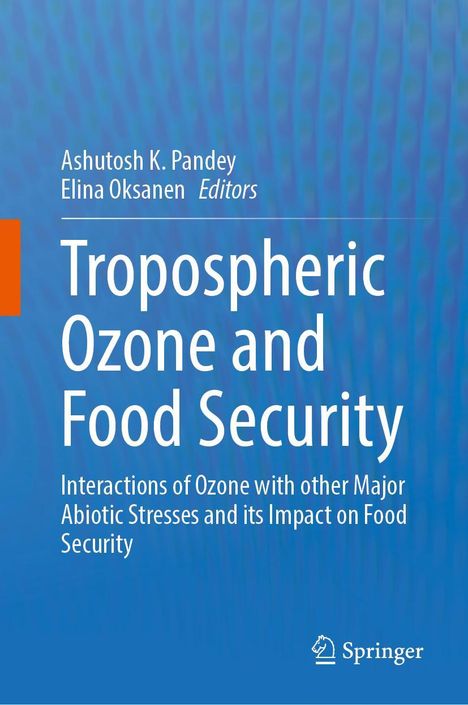Tropospheric Ozone and Food Security, Gebunden
Tropospheric Ozone and Food Security
- Interactions of Ozone with Other Major Abiotic Stresses and its Impact on Food Security
Sie können den Titel schon jetzt bestellen. Versand an Sie erfolgt gleich nach Verfügbarkeit.
- Herausgeber:
- Ashutosh K. Pandey, Elina Oksanen
- Verlag:
- Springer-Verlag GmbH, 02/2026
- Einband:
- Gebunden
- Sprache:
- Englisch
- ISBN-13:
- 9783032036070
- Artikelnummer:
- 12363358
- Umfang:
- 247 Seiten
- Sonstiges:
- XX, 100 p. 20 illus.
- Erscheinungstermin:
- 21.2.2026
- Hinweis
-
Achtung: Artikel ist nicht in deutscher Sprache!
Klappentext
This book discusses the impact of high-tropospheric ozone pollution and its interactions with other major abiotic stress factors, such as elevated carbon dioxide, nitric oxide, volatile organic carbon, UV radiation, heavy metal stress, drought, salinity on the crop production and the crop quality. Climate change is a serious concern affecting both vegetation and humans adversely. Tropospheric ozone is considered to be one of the major drivers for climate change and is also a phytotoxic gaseous air pollutant causing a serious threat to crop productions and global food security. Crop production is an ultimate consequence of several environmental challenges which the crop has undergone during its growth and development. Under different stresses plants tend to alter their carbon and nitrogen metabolism resulting in changes in chemical composition of vegetative plant parts and also grain yield and its quality. Therefore, in order to understand the yield, it is inevitable to take into account effects of different stress factors and their interactions to understand how they can alter crop yield and its quality.
Meanwhile, many studies exist indicating the detrimental effects of tropospheric ozone, but knowledge related to the interactions with other major abiotic stresses with ozone and the understanding of crop quality deterioration is scattered till date. Therefore, this book highlights the challenges associated with the lacuna of information and includes chapters covering research, reviews and case studies to address this issues. It discusses altered strategies in term of biomass allocations, nutrient mobilization, food grain quality deterioration and chapters addressing multiple abiotic stress interactions under high-ozone condition.

